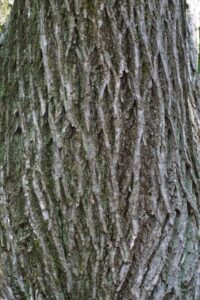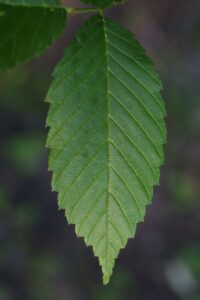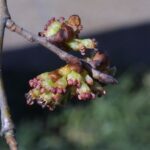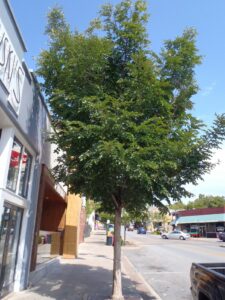Botanical Name:
Ulmus americana ‘Princeton’
Family Name:
Ulmaceae / elm
Description:
The Princeton elm is a cultivar (a plant variety that has been produced in cultivation by selective breeding), of the species American elm. Unlike other American elms, the Princeton elm is resistant to Dutch Elm Disease, making it a popular planting choice.
Size:
60 – 80′
Habitat and Range:
The American elm is native to eastern and central North America, preferring moist soil along streams and wetland edges. The Princeton variety is a particularly hardy tree, tolerant of a wide range of conditions, and particularly suitable for urban environments.
Attributes:
The Princeton elm has a dense, symmetrical, upright form and dark green foliage. The leaves are simple with a toothed edge, and lop-sided leaf base. The foliage turns yellow-ish in the fall.
Wildlife Value:
American elms, including the Princeton variety, attract many migrant bird species. The tree can live 200 – 300 years, and older trees can support diverse insect communities, which in turn provide food for birds.
Did you Know?
• American elms have been used for a wide range of medicinal purposes, including using the bark for cleaning wounds, and treating common complaints including diarrhea and cough.
• The wood of elm is resistant to splitting, which is why Native Americans used elm to produce ropes and canoes. Elm continues to be used in shipbuilding and flooring.
Benefits to Our Community (based on carbon dioxide sequestered, storm water runoff avoided, and air pollution removed each year):
Over the next 15 years, this tree will give back $90 worth of benefits to our community.





